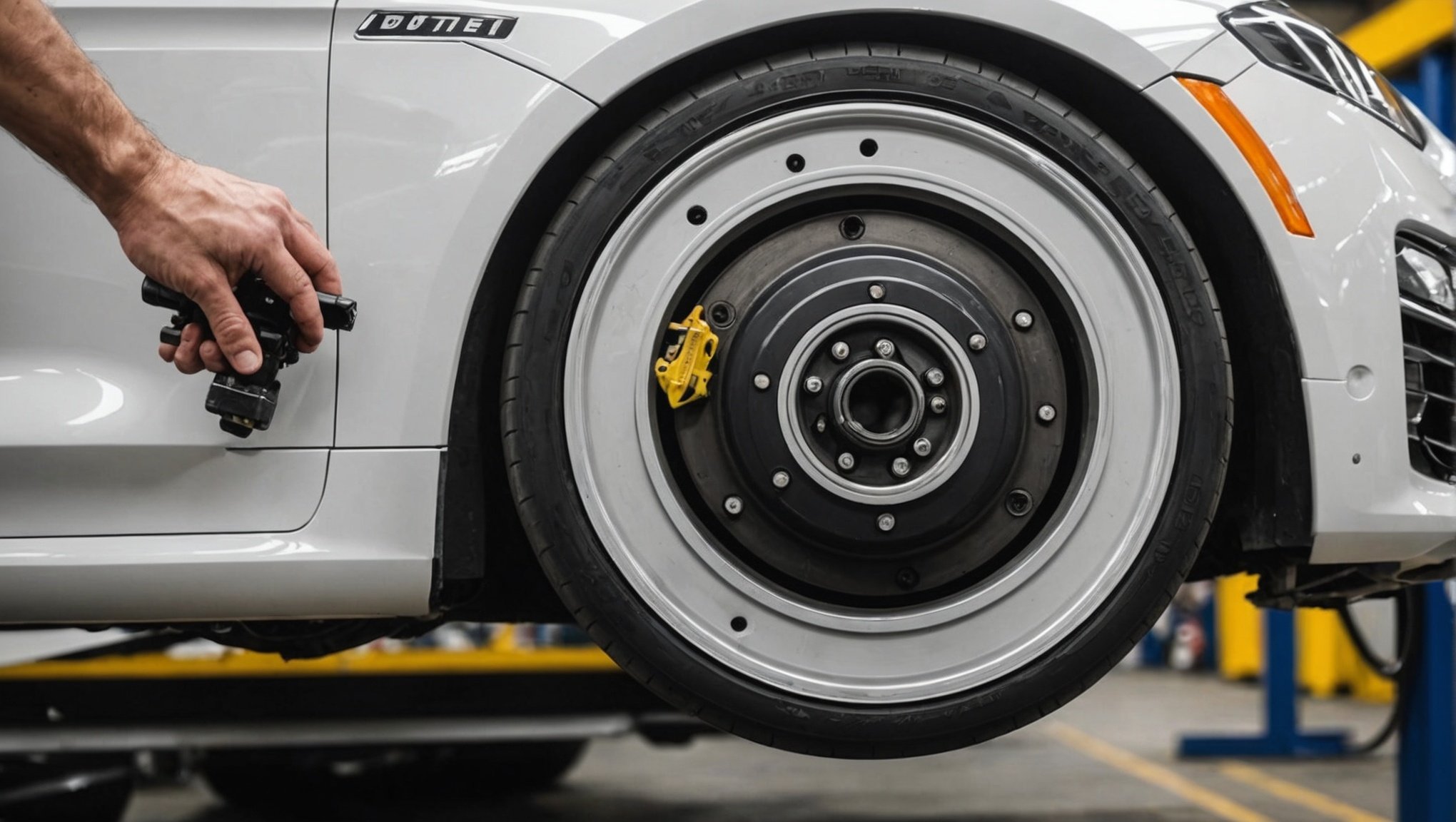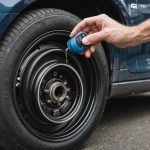Your vehicle's brake system is essential for safety and performance. A masterful overhaul not only enhances driving experience but also extends the lifespan of your car. This guide equips UK car owners with practical steps and insights to tackle brake system maintenance confidently. Beyond basic repairs, discover expert tips and troubleshooting techniques that empower you to stay ahead. Whether you're a novice or experienced DIYer, it's time to enhance your skills and ensure your braking system functions optimally. Let's transform your understanding and approach to brake care.
Understanding Brake Systems
The brake system is a crucial component in vehicle safety, ensuring that drivers can slow down or stop effectively. At its core, the system consists of several key components: the brake pedal, brake lines, brake pads, rotors, and calipers. Each part plays a vital role in the overall function of the system. The brake pedal is the initial point of contact, which, when pressed, activates the brake lines. These lines carry brake fluid to the calipers, which then press the brake pads against the rotors, creating the friction needed to slow the vehicle.
In parallel : Discover quality used cars on west island, montreal today
There are different types of brake systems, primarily disc brakes and drum brakes. Disc brakes are commonly used in modern vehicles due to their superior performance in wet conditions and their ability to dissipate heat effectively. They consist of a rotor attached to the wheel and a caliper that houses the brake pads. Drum brakes, on the other hand, have a drum that rotates with the wheel. When the brake is applied, shoes inside the drum press outward, creating friction to slow the vehicle.
Understanding these components and their functions highlights the brake system's importance in maintaining vehicle safety.
Also to discover : Mastering the Road: Essential Tips for Readying Your Car for the Unique Challenges of Rural Driving in the UK
Tools Required for Brake System Overhaul
When undertaking a brake system overhaul, having the right brake tools is crucial. These tools ensure efficiency and safety during the process. Here's a list of essential equipment you'll need:
- Brake Caliper Tool: This is necessary for compressing the caliper pistons back into their housing, allowing for easy installation of new brake pads.
- Brake Pad Spreader: Similar to the caliper tool, this helps in creating space for new pads.
- Torque Wrench: Ensures that all bolts are tightened to the manufacturer's specifications, preventing over-tightening or loosening.
- Brake Bleeder Kit: Essential for removing air bubbles from the brake lines, which can compromise brake performance.
For quality tools, consider trusted brands like Bosch or Draper, known for their durability and precision. Investing in high-quality tools can save time and ensure a smoother overhaul process.
Safety should never be overlooked. Equip yourself with safety goggles to protect your eyes from dust and debris, and wear mechanic gloves to prevent hand injuries. Additionally, using a jack stand is crucial when working under the vehicle, providing stability and safety.
Step-by-Step Brake System Overhaul Process
Overhauling your brake system is a meticulous task that requires attention to detail and safety. This section will guide you through the brake overhaul procedure, ensuring effective brake maintenance.
Preparing the Vehicle
Before you begin, ensure the vehicle is on a stable surface. Use a jack stand for added safety. Remove the wheels to access the brake components. It's crucial to inspect the brake lines for wear or damage during this step. Clean the area around the brakes to prevent debris from contaminating new parts.
Removing Old Brake Components
Begin by loosening the caliper bolts with a torque wrench. Carefully remove the caliper and suspend it with a wire to avoid strain on the brake lines. Next, take out the old brake pads and rotors. Inspect the caliper pistons and brake fluid for any signs of leakage or damage. Proper disposal of old parts is essential for environmental safety.
Installing New Brake Parts
Install new rotors and ensure they are securely fastened. Place the new brake pads into the caliper, using a brake caliper tool to compress the pistons if necessary. Reattach the caliper, tightening the bolts to the manufacturer's specifications. Finally, bleed the brakes using a brake bleeder kit to remove air from the system, ensuring optimal brake performance.
Common Mistakes to Avoid
Embarking on a brake overhaul can be daunting, especially with potential brake overhaul pitfalls lurking. Avoiding common errors is crucial for safety and functionality. One frequent mistake is neglecting to follow the manufacturer guidelines. These instructions are tailored to your vehicle, ensuring optimal performance and safety. Ignoring them can lead to improper installation and even brake failure.
Another common error is overlooking the importance of torque specifications. Each bolt in the brake system has a specific torque setting. Over-tightening can strip threads, while under-tightening can result in loose components, both compromising safety.
Additionally, failing to properly bleed the brake lines is a significant pitfall. Air bubbles in the brake lines can reduce braking efficiency, leading to a spongy brake pedal feel. Always use a brake bleeder kit to ensure all air is removed from the system.
Lastly, not inspecting the brake fluid can lead to degraded performance. Brake fluid absorbs moisture over time, reducing its effectiveness. Regularly check and replace the fluid as needed. By being vigilant and adhering to these guidelines, you can avoid common mistakes and ensure a successful brake overhaul.
Safety Considerations During Overhaul
When performing a brake system overhaul, prioritising brake system safety is paramount. Ensuring a secure environment begins with adhering to essential overhaul precautions.
Firstly, always work on a stable surface and use a jack stand to prevent accidents. This ensures the vehicle remains secure while you access the brake components. Wearing safety goggles and mechanic gloves further protects against debris and potential hand injuries.
Handling brake fluid requires caution. It is corrosive and can damage vehicle paint and skin. Always wear gloves and ensure proper disposal of old fluid. Keep a container ready to catch any spills during the bleeding process to prevent contamination and environmental harm.
After completing the overhaul, testing the brake system is critical. Begin by gently pressing the brake pedal to ensure it feels firm and responsive. Conduct a low-speed test drive in a controlled environment to verify the brakes engage smoothly and effectively. This step confirms the system's reliability and identifies any issues needing adjustment.
By following these safety guidelines, you can ensure a successful and secure brake system overhaul.
UK Regulations and Compliance
Navigating UK vehicle regulations is essential for maintaining both safety and legality in your brake system overhaul. The compliance standards set by the UK government ensure that all vehicles meet specific safety criteria, which include the performance and reliability of brake systems.
Overview of Relevant UK Brake System Regulations
In the UK, the MOT test is a key regulatory measure that assesses a vehicle's roadworthiness, including its braking efficiency. Vehicles must pass this annual test to be legally driven on public roads. The MOT test checks for adequate brake pad thickness, rotor condition, and the absence of leaks in the brake lines.
Importance of Compliance
Adhering to these compliance standards is crucial not only for legal reasons but also for ensuring the safety of all road users. Non-compliance can lead to fines, legal repercussions, and increased risk of accidents. Regular inspections and maintenance are vital to meet these standards.
Resources for Checking Local Regulations
To ensure your vehicle complies with local regulations, consult resources such as the Driver and Vehicle Standards Agency (DVSA) or visit the official government website. These platforms provide comprehensive guidelines and updates on any changes to compliance requirements.
Maintenance Tips for Brake Systems
Regular brake maintenance is essential to ensure safety and longevity. Routine checks can prevent costly repairs and enhance performance.
Routine Maintenance Checks
Conduct regular inspections of your brake system. Look for signs of wear on brake pads and rotors. Ensure brake fluid levels are adequate and inspect for any leaks. Regularly checking these components helps maintain optimal braking efficiency.
Signs Indicating the Need for Maintenance
Be alert to warning signs that indicate your brakes need attention. Listen for unusual noises, such as squealing or grinding, which often suggest worn brake pads. Pay attention to a spongy brake pedal feel, as it may indicate air in the brake lines or low fluid levels. If the vehicle pulls to one side when braking, it could signal uneven wear or a caliper issue.
Tips for Prolonging Brake System Lifespan
To extend the life of your brake system, adopt these brake care tips:
- Avoid aggressive braking; it increases wear on pads and rotors.
- Regularly flush and replace brake fluid to prevent moisture buildup.
- Ensure proper wheel alignment to reduce uneven brake wear.
By following these practices, you can enhance the durability and effectiveness of your brake system.
Visual Aids and Resources
Visual aids are invaluable when it comes to understanding the intricacies of a brake overhaul. They provide clear, step-by-step guidance, making complex processes more accessible. Whether you're a novice or experienced mechanic, leveraging instructional resources can greatly enhance your comprehension and execution of brake maintenance tasks.
Recommendations for Helpful Videos and Guides
Online platforms like YouTube host a plethora of videos offering detailed tutorials on brake system overhauls. Channels such as ChrisFix or EricTheCarGuy are renowned for their comprehensive guides, which break down each step with clarity. These resources offer visual demonstrations that can be paused and replayed, allowing you to learn at your own pace.
Sources for Diagrams and Illustrations
Diagrams and illustrations are equally crucial, providing a visual representation of the brake system's layout. Websites like AutoZone or Haynes Manuals offer detailed diagrams that can help you identify parts and understand their functions. These resources are particularly useful for visual learners who benefit from seeing the components in relation to one another.
Importance of Visual Aids
Incorporating visual aids into your brake overhaul process not only aids understanding but also boosts confidence. They ensure that you follow the correct procedures, reducing the risk of errors and enhancing safety.
FAQs and Troubleshooting
Navigating a brake system overhaul can raise several questions and concerns. Here, we address common queries and provide troubleshooting tips to ensure your brake system operates smoothly.
Common Questions About Brake System Overhaul
What should I do if my brakes squeal after an overhaul?
Squealing brakes often indicate that the brake pads are not properly seated or that the pads and rotors are not compatible. Ensure the pads are correctly installed and consider using a high-temperature brake lubricant on the back of the pads.
Why is my brake pedal still spongy after bleeding the brakes?
A spongy pedal can result from air still trapped in the brake lines. Re-bleed the system thoroughly, ensuring no air remains. Check for leaks in the brake lines or calipers that might allow air to enter.
Troubleshooting Tips for Post-Overhaul Issues
- Brake Pulling to One Side: Check for uneven wear on brake pads or a stuck caliper.
- Vibration When Braking: Inspect rotors for warping or uneven surfaces.
Resources for Further Assistance
For more detailed guidance, consult vehicle-specific repair manuals or seek advice from professional mechanics. Online forums and communities can also offer valuable insights and support for troubleshooting brake system issues.

















